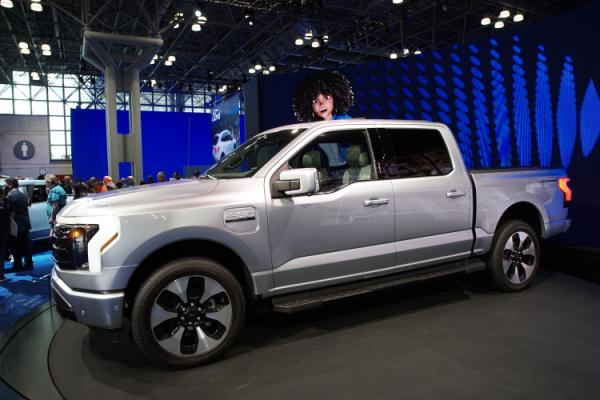Ford has announced a $3.5 billion electric vehicle factory in its home state of Michigan, where it will produce EV batteries with a lithium iron phosphate chemistry that it says are more durable, faster charging, and more affordable than its current lineup of EVs.
As The Verge reports, Ford will develop the LFP batteries alongside China’s Contemporary Amperex Technology Co. Limited (CATL), a global producer of EV batteries — though the automaker stressed that it will own and operate the plant outright through its wholly owned subsidiary and that the Chinese company will only provide “knowledge and services.” The construction project will generate 2,500 jobs for the region, with initial production expected to commence in 2026.
Ford claims it is the first automaker to commit to developing two separate battery chemistries for its EVs at the same time: lithium iron phosphate (LFP) and nickel cobalt manganese (NCM). (Tesla is also producing vehicles with LFP batteries.)
Most of today’s EVs use lithium-ion batteries whose cathodes use NCM chemistries. But NCM also has a lot of baggage, due mostly to cobalt, which has been called the “blood diamond of batteries” because it’s been mined in a way that’s endangered child workers and wrecked the environment in the Democratic Republic of Congo.
In contrast, LFP batteries tend to be cheaper and longer lasting but aren’t as energy dense as NCM batteries. LFP batteries are also less complex to produce. The new factory with CATL will add approximately 35 gigawatt-hours (GWh) of LFP battery capacity, the company adds.
“They are exceptionally durable and they tolerate more frequent and faster DC fast charging,” Lisa Drake, vice president of EV industrialization at Ford model e, the company’s EV division, said during a briefing with reporters Monday. “And they actually perform best when they’re being charged from zero to 100 percent regularly. And that is ideal for customers who want to drive all the way to empty and then charge quickly back to 100 percent.”
The vehicles with LFP batteries will also be more affordable than Ford’s current lineup — though how much more affordable, the company wasn’t prepared to say. We may not have to wait too long to find out, as the company says it expects to introduce its first LFP-powered Mustang Mach-E later this year and F-150 Lightning next year. (Ford recently slashed Mach-E prices in a bid to compete with the No. 1 EV seller, Tesla.)
Drake emphasized that the decision to add LFP batteries to its mix of EVs was partly inspired by a desire to reduce costs. “This is how we look at the recipe to create one of the lowest-cost US-produced batteries when this plant comes on line in 2026,” she said.
According to Auto News, reducing costs is certainly top of mind for the automaker, which had a particularly rough earnings this past quarter. Ford CEO Jim Farley said the company left $2 billion in profits on the table, blaming poor execution and “deeply entrenched issues in our industrial system.”
Ford’s stated EV goals are certainly ambitious. The company has said that it would spend approximately a cumulative $50 billion on its electrification plans and that, by late 2023, it will have enough battery supply to support the production of 600,000 EVs: 270,000 Mustang Mach-Es; 150,000 E-Transit delivery vans; 150,000 F-150 Lightnings; and 30,000 units of a mystery all-new midsize SUV destined for release in Europe. That number will increase to 2 million EVs globally by the end of 2026.
Ford is the latest automaker to announce a major EV factory project to be located in the US — a sign that the tax credits and other financial incentives in the Biden administration’s Inflation Reduction Act (IRA) are having the desired effect of bolstering the US’s energy and manufacturing infrastructure.
Ford currently sources most of its batteries from SK Innovation out of South Korea. By making its own batteries in the US, Ford thinks it can avoid some of the conflicts that arise from importing batteries overseas. It’s also crucial in ensuring that its EVs qualify for the IRA’s $7,500 federal EV tax credit, which requires vehicles and batteries to be manufactured in North America. Although the IRA also outlines battery sourcing requirements that discourage dealings with “foreign entities of concern,” like China, we still won’t know how the Treasury Department will interpret these rules until sometime next month.
—
Photo Credit: quiggyt4 / Shutterstock.com
